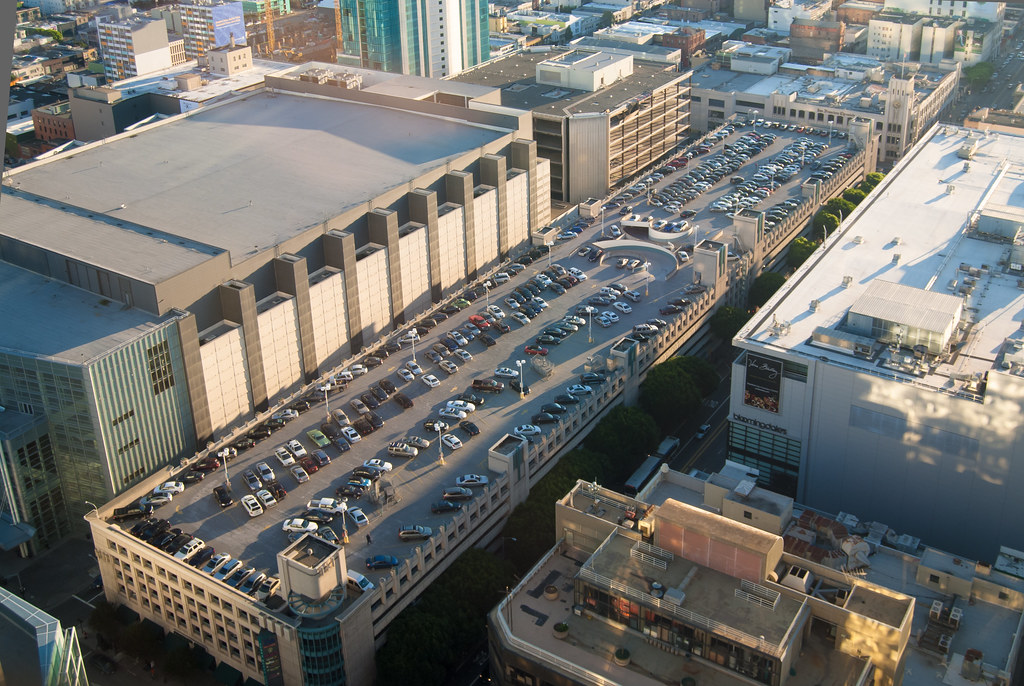
What if San Francisco stopped adding car parking? The idea might sound a little odd to the average person, but when you look at where the city is heading, the really crazy scenario would be to keep on cramming more cars into our neighborhoods. Under current policies, SF is poised to build 92,000 spots for personal car storage by 2040, consuming an ungodly amount of space in our compact, 7-mile-by-7-mile city. At what point does it stop?
"If we were really serious about" curbing emissions and creating a livable city, "we would just cap it at zero right now," said Jason Henderson, author of "Street Fight: The Politics of Mobility in San Francisco," at a forum this week on San Francisco's parking policies.
Henderson took the figure of 92,000 projected spaces from Plan Bay Area, which is supposed to start the region on a path toward smart growth, but still foresees a heavily car-dependent future in 25 years. The SF Transportation Plan, created by the SF County Transportation Authority, projects "total gridlock" within the same time frame unless the city makes serious changes to its car-centric land-use planning policies.
Although the move away from policies like minimum parking requirements, which mandate a certain number of cars per household in new buildings, is often framed as an ideological shift, Josh Switzky of the SF Planning Department says it's simpler than that -- there are physical limits to cramming cars into the city. "It's about geometry," he said. "We have to figure out ways to accommodate people more efficiently."
In other words, there's a finite amount of space in the city. Does it make any sense to squeeze thousands of additional cars into San Francisco when we're still struggling to create enough space to house people? What are the full costs SF will absorb if it continues to build more infrastructure for cars?
As studies have shown, building parking leads to more driving -- if you build it, they will come. Yet the Planning Department has never seriously considered a citywide parking cap. In fact, the closest the city has come to the concept is a recommendation in the Transbay Center District Plan to study an absolute limit on parking within that portion of SoMa, which is set to grow around a major hub for regional transit and high-speed rail.
That study, however, has no timeline or funding behind it. And much of the rest of the city still has minimum parking requirements for new development, though progress in recent years has been made in the eastern neighborhoods on abolishing minimums and setting parking maximums.
There's not even a parking cap in the Market-Octavia Plan, which encompasses the area around Hayes Valley. According to Switzky, that land use plan is looked to nationally as a model for limiting parking. Created after the removal of the Central Freeway spur a decade ago as a guide for the development of newly-opened land, it contains some of the nation's strictest maximum parking ratios -- generally, 0.5 parking spaces per housing unit.
But like the rest of the city, the Market-Octavia Plan allows the expansion of car storage to scale infinitely with housing growth. There is no overall limit on new parking.
Unless plans and the priorities of our leaders change (lately, some supervisors have actually pushed for more housing for cars and less for people), San Francisco is destined to have worse congestion, less effective transit, and unlivable streets.
The point was powerfully conveyed by a quote Switzky cited from Allan Jacobs, once the head of the SF Planning Department, and professor emeritus of city planning at UC Berkeley: "No great city has ever been known for its abundant supply of parking."
Streetsblog won't be publishing on Presidents' Day.




